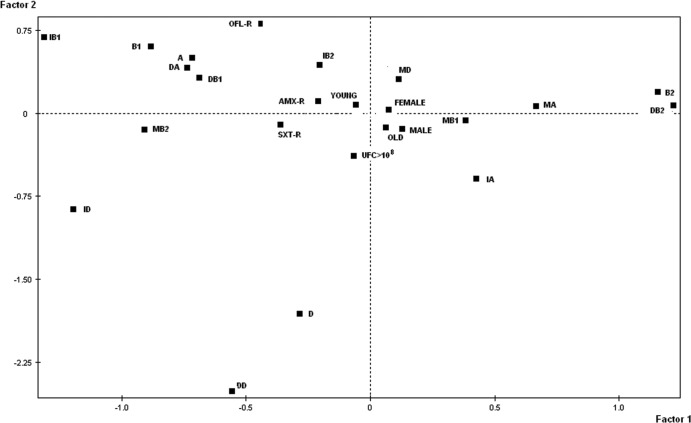Fig 1.
FAC for the 98 subjects with E. coli found in their feces. Projections on the plane F1-F2 of the four phylogenetic groups (A, B1, B2, and D) of the unique randomly selected strains, of the dominant phylogenetic group (DA, DB1, DB2, or DD), of the intermediate phylogenetic group (IA, IB1, IB2, or ID), and of the minor phylogenetic group (MA, MB1, MB2, or MD) defined for each of the four phylogenetic groups are shown. The dominant, intermediate, and minor groups were defined from data from the quantitative-PCR assay. The abundance of E. coli in stools (CFU > 108); the gender of the subjects (male or female); the age of the subjects (older or younger than 60 years); and the resistance of the unique randomly selected strains to amoxicillin (AMX-R), ofloxacin (OFL-R), and sulfamethoxazole-trimethoprim (SXT-R) were also projected on the plane.

